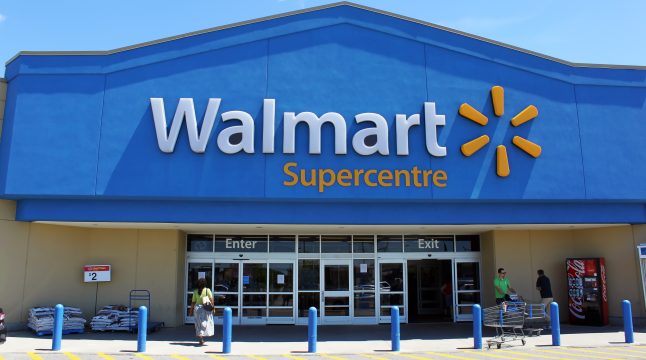From Boycotts To Buybacks: Why Walmart Outshines Target In 2025

Image courtesy of 123rf.com
According to the U.S. Census Bureau, wholesale inventories contracted by 0.2% from July to August, totaling $905.2 billion. Over the same period, retail inventories flatlined at $809.4 billion. The agency is scheduled to release its next Advance report for September on October 29th.
Previously, in May, Morgan Stanley analysts projected that President Trump’s tariff realignment would likely lead to significant earnings revisions by retailers, with up to 35% earnings-per-share (EPS) reduction for softline (clothing, shoes, bedding) retailers.
To offset tariffs, major general merchandise chains such as Walmart and Target have been reconfiguring supply chains and leveraging scale to absorb cost pressures. However, these two chains had a very different performance this year, and for good reasons.
Walmart (WMT) and Target (TGT) Stock Performance
Year-to-date, there has been a clear divergence between Walmart Inc. (NYSE: WMT) and Target Corp. (NYSE: TGT). While Walmart stock gained nearly 18% value, Target shares dropped by 31%. Investor expectations reflect this, as Walmart’s price-to-earnings (P/E) ratio is almost 4x higher than Target’s, at 40.16 vs 11.12 respectively.
Over a 52-week period, the average TGT stock price is $111.07, down 53% from its all-time high of $238 in November 2021. Walmart stock reached its all-time high recently, on October 15th, at $109 per share, which is just 12.3% higher than its 52-week average of $95.56 per share.
Moving forward according to Wall Street Journal’s forecasting data, Walmart’s average price target is $115.03 against its current price level of $106.19 per share, making for an 8.3% profit potential for shareholders. The overwhelming majority of analysts are in the “buy” camp for WMT stock, with only one analyst bearish, issuing a “sell” rating.
In contrast, most analysts rate TGT stock as “hold”, with 9 on the “buy” side and 5 on the “sell” side. The average TGT price target is $100.73, still above the current price of $94.85, making for a 6.2% profit potential.
The question is, why are Walmart and Target diverging so starkly?
Target Paying for Its Target Customers
From the get-go, Target branded itself as a balancing act between value and quality, commonly summed up as a ‘cheap-chic’ retailer, meaning that its merchandise is typically of higher quality but only at slightly higher prices.
However, this business model performs poorly against sustained inflationary pressure that pushes consumers to value-oriented chains like Walmart. To stop this bleed, Target launched its ‘dealworthy’ low-priced brand in February 2024.
When President Trump took his second term in January 2025, this signaled an end to hyper-racialized policies across federal agencies known under the umbrella of Diversity, Equity, Inclusion (DEI) programs. In fact, one of Trump’s executive orders was the “Ending Illegal Discrimination and Restoring Merit-Based Opportunity”.
Seeing the cultural shift unfold, Target ended its three-year DEI initiative in the same month, specifically its Racial Equity Action and Change (REACH) program. However, because of prior catering to the demographic that had been persuaded to support such initiatives, Target suffered a sustained boycott.
This boycott was boosted by the American Federation of Teachers (AFT) and the Chicago Teachers Union, alongside other networks and orgs.
In other words, Target played up ‘inclusivity’ to compensate for its logistics and pricing shortcomings. Once DEI was dropped, that positioning collapsed, revealing how dependent the brand had become on cultural signaling over raw competitive strength.
Of course, the Target boycott has been exacerbated by the still-ongoing Trump Derangement Syndrome (TDS) among the company’s targeted demographic.
Target Falls While Walmart Rises
In the six months ending August 2, Target’s sales dropped by 1.9%, to $49 billion. Over this period, the company’s operating income declined by 4.8% year-over-year. Likewise, Target’s gross margin rate dropped from 30% to 29%, attributed to purchase order cancellation costs and higher markdown rates.
On Thursday, ahead of Target’s Q3 earnings report on November 19th, the company announced layoffs of around 8% of its global workforce – 1,000 corporate employees and 800 in open roles. Interestingly, in Q2, the company abstained from any stock buybacks, although it still holds ~$8.4 billion in the repurchase program.
In contrast to Target’s declining sales and layoffs, Walmart increased net sales 3.7% year-over-year in six months ending July 31, to $339.7 billion, delivering increased gross margin by 4bps in Q2 compared to the year-ago quarter. Although Walmart’s operating income declined by 8.2% in Q2, it is not indicative of a trend due to being affected by discrete legal and restructuring costs.
For fiscal 2026, Walmart increased its net sales growth outlook to 3.75%-4.75%, giving EPS projection of $2.52-$2.62.
This is up from $2.42 in fiscal 2025, which is also higher from $1.92 in fiscal 2024. During the year, Walmart repurchased $6.2 billion worth of shares. Against its total debt load of $50.3 billion, Walmart holds $9.4 billion in cash balance. For comparison, Target has $4.3 billion in cash vs $23.2 billion in debt, effectively having the same debt-to-cash ratio as Walmart.
More importantly, however, Walmart’s debt interest expenses are minimal in the context of $11.5 billion net income in the six months ending July 31, compared to Target’s $935 million, which is down 21.5% YoY.
Together with sustained stock buybacks and retail dominance above both Amazon and Costco, this makes Walmart the most financially resilient retailer in post-tariff America.
More By This Author:
Procter & Gamble Posts Strong Q1 Results, Maintains Guidance For Fiscal Year 2026General Dynamics Surpasses Q3 2025 Expectations, Driven By Strong Aerospace Growth
Tango Therapeutics Stock Falls After $210 Million Equity Offering
Disclaimer: The author does not hold or have a position in any securities discussed in the article. All stock prices were quoted at the time of writing.



